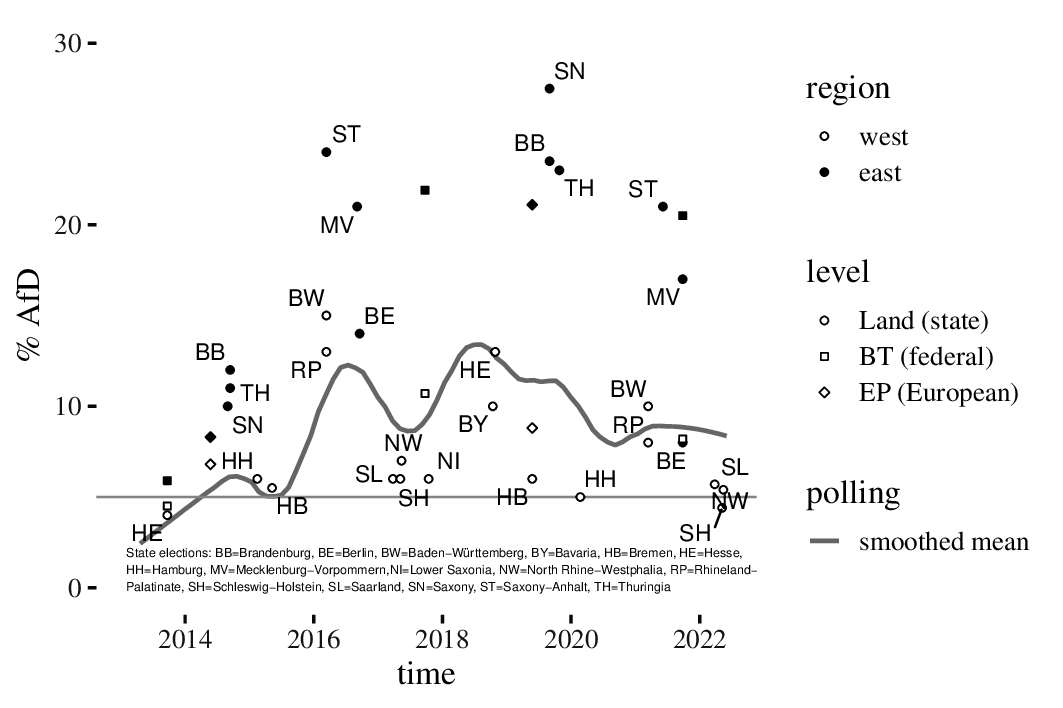My piece on the role that Germany’s eastern states – the territory of the former GDR – have played for the breakthrough and rise of the radical right Alternative for Germany has been “forthcoming” for a while. So long indeed that it was necessary to update this graph, which shows how (and where) electoral support for the AfD has waxed and waned between 2013 and 2021.
Update June 2022: It is still forthcoming, and I have updated the graph. Again.

The strong gray line shows (smoothed) support for the Alternative in public opinion polls (FGW and Infratest). The boost in 2016 that followed the “refugee crisis” is clearly visible, as well as another peak in 2018 after the party entered the Bundestag. It is also clear that support for the party has declined since then and has been more or less stable through the pandemic.
The circles represent state election results, with black markers for the eastern and hollow markers for the western states. The difference in support is striking and remains stable over the whole period. There is also considerable variation within both blocks. “Mitteldeutschland” (the southern part of the former GDR) stands out as an AfD stronghold. If you squint a bit, you can also that the party dropped out of a state parliament for the first time in the 2022 Schleswig-Holstein election (bottom right corner).
Squares and diamonds represent the party’s results in nationwide (Bundestag and EP) elections. The east-west gap is very visible here, too. In the 2021 Bundestag election, the party won 20.5 per cent of the vote in the east, but only 8.2 per cent in the west.
Discover more from kai arzheimer
Subscribe to get the latest posts sent to your email.


I noticed that seemed to be a thing a few months ago when I was reading about the Wagner-related spying scandal. I thought it interesting that the accused, a retired BND officer, was an East German with AFD connections & possible Reichsbürger sympathies. 😒
Sure, we can send once we finish page proofs. Thanks!
Sounds great. Do you think you could send a PDF my way? We have a subscription, but with a four(!) year moving wall.
Terrific. @mhansenphd and I have a piece coming out in GP&S on the AfD’s E/W divide
My take is that AfD supports keeping jobs connected with the coal industry, which is still prominent in the former GDR states